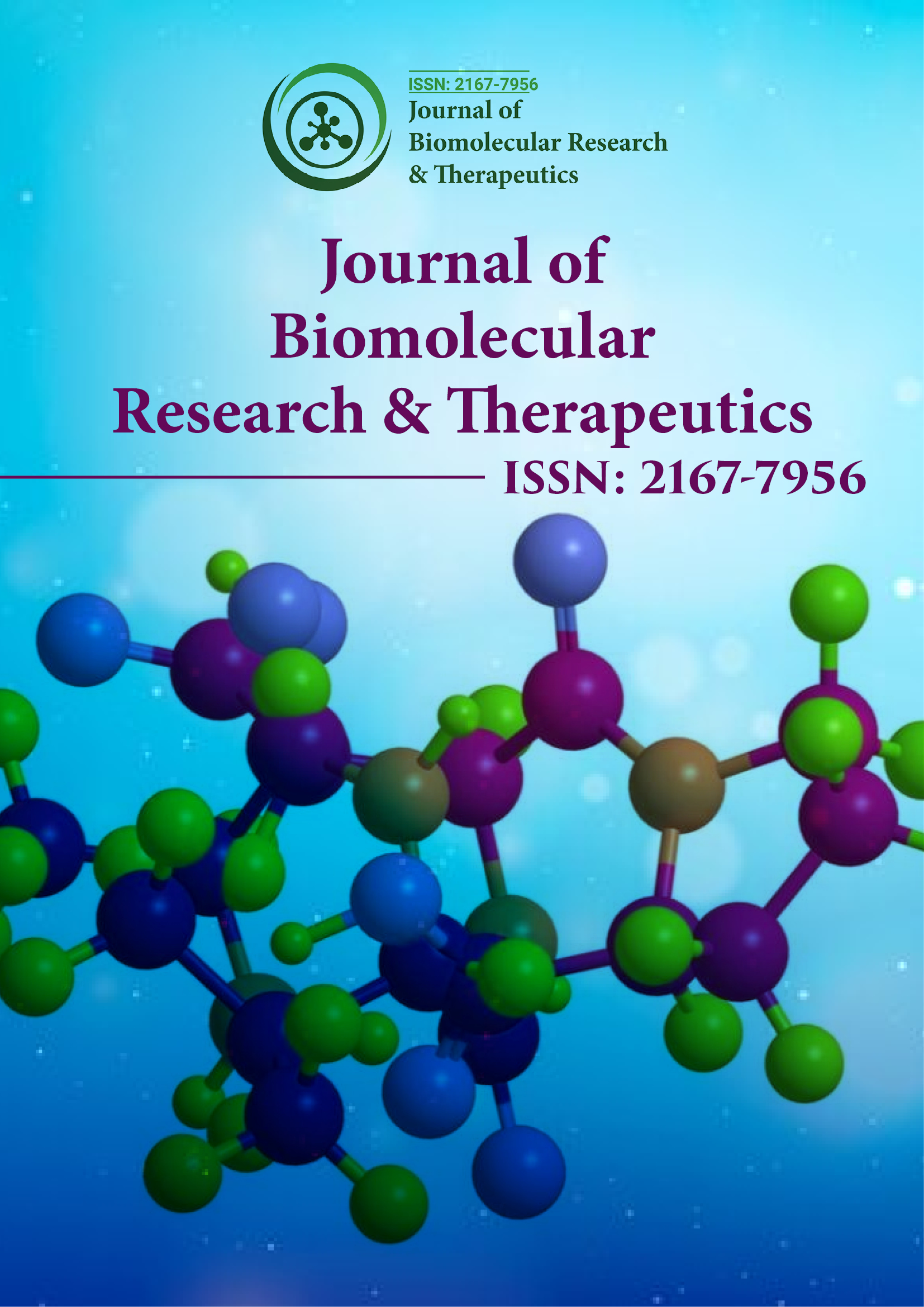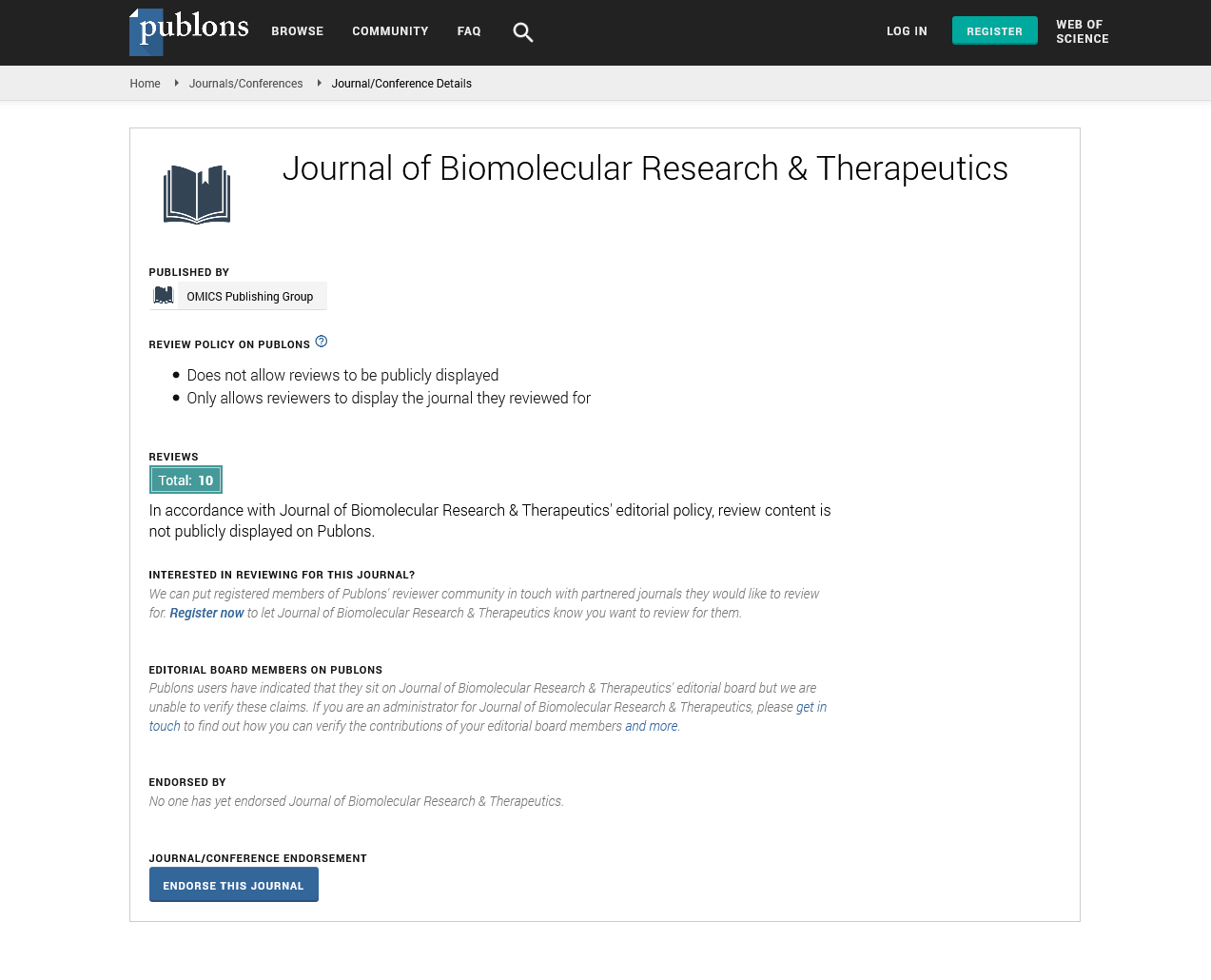PMC/PubMed Indexed Articles
Indexed In
- Open J Gate
- Genamics JournalSeek
- ResearchBible
- Electronic Journals Library
- RefSeek
- Hamdard University
- EBSCO A-Z
- OCLC- WorldCat
- SWB online catalog
- Virtual Library of Biology (vifabio)
- Publons
- Euro Pub
- Google Scholar
Useful Links
Share This Page
Journal Flyer

Open Access Journals
- Agri and Aquaculture
- Biochemistry
- Bioinformatics & Systems Biology
- Business & Management
- Chemistry
- Clinical Sciences
- Engineering
- Food & Nutrition
- General Science
- Genetics & Molecular Biology
- Immunology & Microbiology
- Medical Sciences
- Neuroscience & Psychology
- Nursing & Health Care
- Pharmaceutical Sciences
Perspective - (2022) Volume 11, Issue 1
Clinical Trials on Mutations and their Abnormal Changes
Michael Harrison*Received: 28-Dec-2021, Manuscript No. BOM-22-49192; Editor assigned: 31-Dec-2021, Pre QC No. BOM-22-49192; Reviewed: 14-Jan-2022, QC No. BOM-22-49192; Revised: 19-Jan-2022, Manuscript No. BOM-22-49192; Published: 26-Jan-2022, DOI: 10.35248/2167-7956.22.11.192
Abstract
The genome is composed of one or longer DNA molecules and mutations can occur anywhere in these molecules at any time. The most serious changes occur in genes, which are the functional units of DNA. Mutant forms of genes are called mutated alleles. Genes are usually composed of regulatory regions that turn on / off transcription of the gene at appropriate times during development, and coding regions that carry the genetic code of functional molecules, generally the structure of proteins. .. Proteins are primarily chains of hundreds of amino acids. Cells make 20 common amino acids. This is the unique number and sequence of these amino acids that give the protein its unique function. Each amino acid is three of the four possible base pairs of DNA (A–T, T–A, G–C, and C–G,)
Therefore, mutations that alter the DNA sequence can alter the amino acid sequence and reduce or nullify the function of the protein. Changes in the DNA sequence of the gene’s regulatory regions can adversely affect the timing and availability of the gene’s proteins, leading to severe cellular dysfunction. Many mutations, on the other hand, are silent and have no apparent effect at the functional level. Some silent mutations are of the type that are in the DNA between genes or do not result in significant amino acid changes.
Here, protein domain names act as modules, every with a specific and impartial characteristic, that may be combined collectively to supply genes encoding new proteins with novel properties. For example, the human eye makes use of 4 genes to make structures that experience light three for cone cell or color vision one for rod cell for night time imaginative and prescient. Other kinds of mutation now and again create new genes from formerly noncoding DNA.
Keywords
Mutant Allele; Protein; Gene; Base Pair
Introduction
Mutations, more or less permanent changes in the genetic material (genome) of a cell of an organism or virus, can be transmitted to the progeny of the cell or virus. (Although the genome of an organism is entirely composed of DNA, the genome of a virus is composed of either DNA or RNA. See Genetics: The Physical Foundation of Genetics.).
The Body of a Multicellular Organism Mutations in the DNA of a cell (somatic cell mutation) can occur via DNA replication transferred to progeny cells, thus resulting in a sector or patch of cells with abnormal functions such as cancer. Mutations in egg or sperm cells (germ cell mutations) can result in a single progeny in which all cells carry the mutation, as in the case of hereditary human diseases such as cystic fibrosis. And often leads to serious dysfunction.
Mutation is an accident during the normal chemical trade of DNA, often during replication, or exposure to high-energy electromagnetic radiation (such as UV or X-ray) or particle radiation, or highly reactive chemicals in the environment. It arises from one of. Most of them are expected to be harmful because mutations are random changes, but they can also be beneficial in certain circumstances. In general, mutations are the leading cause of genetic variation and the source of evolution by natural selection.
Mutation Changes Within a Gene
Study design
There are several types of mutations. Changes within a gene are called point mutations. The simplest type is a change to a single base pair called base pair substitution. Many of these replace the wrong amino acids at the corresponding positions in the encoded protein, most of which result in changes in protein function. Some base pair substitutions create a stop codon. If the stop codon is at the end of the gene, it usually stops protein synthesis, but if it is in an abnormal position, the protein can be cleaved and fail.
Another type of simple modification, the removal or insertion of a single base pair, generally has a significant effect on the protein, as it discards the protein synthesis that occurs by reading the triplet codon linearly from one end to the other of the gene. Give. This change causes a frame shift when reading the gene, so all amino acids are wrong after the mutation. For some mutant genes, more complex combinations of base substitutions, insertions, and deletions can also be observed.
Conclusion
Mutations can contain the duplication of huge sections of DNA, normally through genetic recombination. These duplications are a first- rate supply of evolving new genes, with tens to masses of genes duplicated in animal genomes each million years. Most genes belong to large gene households of shared ancestry, detectable via way of means of their collection homology. Novel genes are produced via way of numerous methods, typically through the duplication and mutation of an ancestral gene, or via way of means of recombining elements of various genes to shape new mixtures with new functions.
Citation: Harrison M (2022) Clinical Trials on Mutations and their Abnormal Changese. J Biomol Res Ther. 11:192.
Copyright: © 2022 Harrison M. This is an open-access article distributed under the terms of the Creative Commons Attribution License, which permits unrestricted use, distribution, and reproduction in any medium, provided the original author and source are credited.

